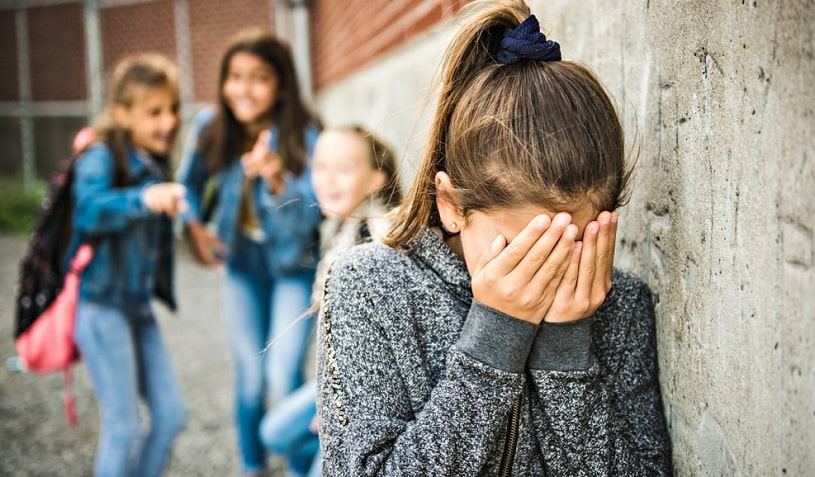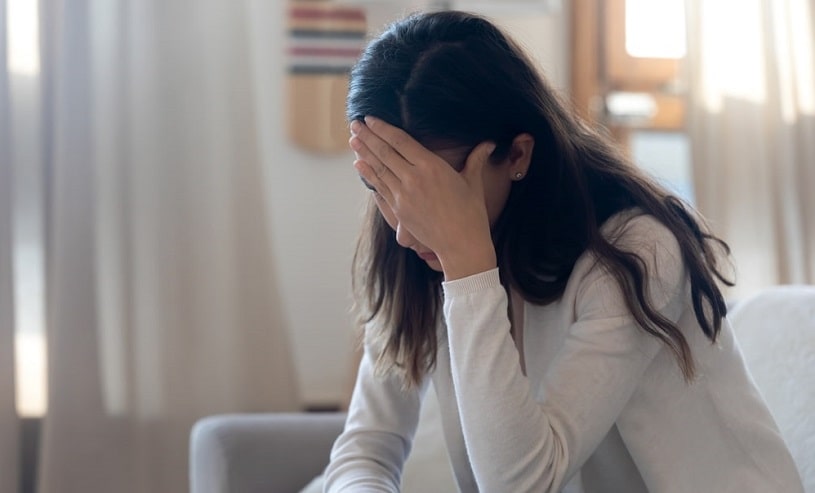For better or for worse, the world rewards winners, and success can be attained in many ways. One of the easier ways is by criticizing, humiliating, or degrading others to make oneself look better. This approach can be learned as early as childhood which is bullying in schools. There are other types of bullying, such as cyberbullying and workplace bullying.
Table Of Contents:
Bullies repeatedly take advantage of their power over others to do harm, and bullying is defined as aggressive, repeated, and unwanted behavior based on an imbalance of power. It can be social, emotional, or physical and can eventually lead to drug abuse by everyone involved.
What Is Bullying?
What is bullying? Oppression is any unwanted, aggressive behavior that involves a real or perceived power imbalance. The victim is constantly being hurt by actions on words on purpose and repetitively.
Oppression is a widespread phenomenon among many cultures and locations around the world. There are many reasons why oppression remains commonplace among many social settings, including struggles to control impulses and anger management issues.
Other reasons include the perpetrator wanting to fit in or a need to exercise power. People can experience oppression in school, the workplace, or even homes. Aside from physical intimidation, there are emotional ways to bully someone, such as calling them names, insulting them, and so on.

Oppression exists in all age groups, including adolescents, middle-aged, and older adults. For example, about 22% of students between the ages of 12-18 admit to being bullied, and 41% think it’ll never stop.
Bullying in Schools
Bullying in schools is prevalent. As mentioned earlier, 1 in 5 people admits to being bullied at one point in their life. Many people don’t even know that they were bullied. Oppression does not have to be physical. Someone being called names, teased inappropriately, or even subtle humiliation counts as bullying in schools.
Bullying in Schools Commonly Happens in the Following Places:
- Inside the classroom
- On the school bus
- In the hallway or stairwell
- In the cafeteria
- In the schoolyard
Without intervention, bullying in schools can have detrimental effects on both the perpetrator and the victim.
Workplace Bullying
Workplace bullying is just as harmful to a person’s mental health. Like oppression in schools, coworkers pick out a meek, quiet coworker and make them their target of intimidation. Employees can also decide to practice workplace bullying on people with different characteristics. Some of these differences include race, gender, sexual orientation, etc.
Without intervention, workplace bullying can take place for a long time.
Cyberbullying
Internet oppression has become extremely common due to the invention of multiple social media applications. Now that people can post pictures and drop their opinions on social media, others who are unnecessarily negative choose to participate in acts called “trolling.”
Not only does this shame a person’s opinions on a particular subject, but it is also common for trolls to body shame without the fear of being attacked themselves. Name-calling, derogatory comments, and rumor spreading are common in this type of oppression.
Types of Bullying
There is not just one type of oppression; the real deal bullies will act as if on instinct to try and find the best method to pick on someone. The way they choose can vary from person to person. Though, There Are Four Main Types of Bullying:
- Verbal bullying is one of the most common types of bullying, and it involves the use of words to harm others – insults, name-calling, making sexual or racist comments, verbal threats, and harsh teasing and taunting. According to a study on oppression and peer victimization at school, cited by the US government website stopbullying.gov, 44.2% of junior high school students experienced name-calling, 43.3% reported teasing, and 36.3% said that someone had spread lies and false rumors about them. Being bullied can lead to teens using drugs.
- Social Bullying is one of the types of bullying, and it involves excluding someone from a peer group. Rumors, verbal threats, and other forms of intimidation are used to this end. The above-cited study showed 28.5% of junior high school students had been threatened by peers. 27.3% had had their belongings stolen, and almost every fourth student (23.7%) had to deal with unwanted sexual comments or gestures. Social bullying often traumatizes those that are isolated and excluded.
- Physical. According to the Bradshaw study, physical oppression is one of the significant types of bullying that typically involves pushing or shoving, which 32.4% of surveyed students experienced. 29.2% of participants reported having been hit, kicked, or slapped.
- Cyberbullying. According to the Center for Disease Control, in 2015, 15.5% of high school students were cyberbullied, and 20.2% were bullied on school property. These percentages are much higher in middle school: 24% and 45% respectively. A 2016 study by Patchin and Hinduja discerns a worrying tendency: the number of students who have experienced cyberbullying has nearly doubled in the decade preceding the survey (18% to 34%).
Bullying and Substance Abuse: The Connection
A study carried out by Ohio State University showed the correlation between bullying and substance abuse. 11.4 percent of middle school bullies used cannabis compared to just 1.6 percent who were not involved in oppression. 31.7 percent of bullies used marijuana among high school students, compared to 13.3 percent who were not involved. The results for alcohol and cigarette use were comparable. Bullying and substance abuse have a complex relationship, affecting both the perpetrators and victims.

How Different Roles Kids Play in Bullying are Connected with Substance Abuse:
- Bullies. Bullies are people that habitually want to inflict several types of pain onto others for self-gratification. People who participate in social bullying may exacerbate pre-existing conditions. By oppressing someone else, the perpetrator tends to unconsciously develop anxiety, negative perceptions of self, depression, suicidal thoughts, and so on. Many reports have shown the correlation between bullying and substance abuse. These studies show that bullies tend to use drugs because of their peer group and antisocial behavior as they develop in life. For example, a survey conducted by the Massachusetts Youth Health Survey suggests that bullies and bully-victims are three to six times more likely to admit substance abuse than those not involved. Additionally, the effects of oppression seem to be felt by bullies more than victims.
- Victims. About 23% of students in the 7th to 12th grade admitted being bullied. Many victims of oppression tend to start abusing drugs in response to the trauma they faced and endured, as there is a strong link between substance abuse and trauma. Victims do this because the trauma causes them to develop negative habits and self-esteem issues. In an attempt to cope with the anxiety developed due to the rejection, isolation, and attack from their colleagues and peers, they tend to misuse substances heavily. Victims are more likely to abuse drugs than people who weren’t bullied.
- Bystanders. 85% of people at school and work tend to witness intimidation as it’s happening. Even bystanders are at risk of becoming addicted to drugs. Although not much research has gone on concerning this, bystanders also tend to struggle with self-esteem issues and mental health disorders.
- Bully-Victims. People who get bullied and then become bullies also suffer from drug abuse and dependence later in life. Instead of dealing with the trauma they got from being bullied, they project their insecurities onto others. Compared to bullies and victims, bully-victims are likely to suffer far more emotional stress and anxiety. Many of them also report feelings of loneliness and anxiety. They tend to look to substances to quell those feelings, which encourages substance abuse and dependence.
Earlier drug use (drug abuse before the age of 18) could also lead to an increased chance of addiction in these children.
Effects Of Bullying
The effects of oppression are numerous and are often lifelong. Lifelong effects involve the development of different types of mental health disorders. Some of these mental health disorders include depression, anxiety, and PTSD. These disorders can affect how individuals live their lives and interact with their environment.
Kids That Have Been Bullied Tend to Suffer From the Following Throughout Their Lifetime:
- Self-esteem issues
- Feelings of inadequacy
- Rage
- Shame
- Mental health disorders
- Insecurities
- Self-harm or suicidal thoughts
Victims of bullying in schools or workplace bullying are at increased risk of using drugs to cope. In addition, people with these types of mental health disorders are at increased risk of abusing drugs. They take these drugs in hopes of numbing the pain and feeling happy. However, the effects don’t last long.
How to Deal With Bullying?
Dealing with oppression isn’t as simple as widely believed, and its negative impact goes far beyond victims. As a parent or guardian, the best way to curb oppression is to check for signs in your child. Symptoms of oppression include the reluctance to go to school, anxiety and tummy aches when it comes to going to school, and so on. Don’t be afraid to ask your kid direct questions and get your kids to talk about their social situation in school.
If you’ve been bullied in the past or present and its effects linger on, the best thing to do is seek help from a therapist or counselor. Practice responses to specific scenarios and try to stand up for what’s right, no matter how hard it may seem.

If you think your child is a bully, try to re-educate them on interacting with their peers. A good way to do this is by using “what if” scenarios and practicing positive and inviting body language. Children learn these inappropriate social cues from the media, so try to teach them the correct ways to socialize with their peers.
Preventing Bullying and Subsequent Drug Abuse
Preventing social bullying is a crucial measure that can positively impact the lives of millions of kids and adults across the US.
Luckily, some specific laws and policies protect individuals who can be discriminated against. For example, the 1964 Civil Rights Act included a law in Title VI that prevents discrimination based on race, gender, and national origin.
Law and policymakers have taken tremendous action to curb oppression in schools. The jurisdiction in all fifty states in the US requires all schools to establish laws and preventative measures against oppression. Some take it a step further by imposing oppression prevention programs in schools. In addition, employers are beginning to develop a clear code of behavior in the workplace. They now live by a robust set of anti-discriminatory values that significantly affect how employees interact. Managers are now leading by example and showing positive and healthy workplace interactions with their coworkers.
There’s a lot of software created to prevent cyberbullying, and they do an excellent job of protecting both children and adults from oppression. This software includes privacy tools and settings, location sharing, and filters on social media.
If all these continue, it can significantly decrease the occurrence of oppression. In turn, this can reduce the prevalence of drug abuse in school and the workplace.
Where Can Victims and Bullies Get Professional Help?
Bullying is hard on all parties involved. Since poor self-esteem is a risk factor for becoming a bully and a victim, constructive measures promoting self-confidence are essential ways to reduce the risk of bullying in schools and the workplace. These can include engaging in work projects, sports, musical activities, theatrical performances, and psychotherapy.
Listening to a person and getting them to join a support group will help them feel less alone and go a long way toward providing the stability needed to protect them from further victimization.
A qualified professional can perform a comprehensive evaluation of the child to establish any underlying issues, such as depression, anxiety, learning disorders, or drug and alcohol abuse.
Therapy can explore the child’s feelings, thoughts, and behavior and help them stop the oppression of other students and protect themselves from pressure. Professional help is mandatory in cases where the child is experiencing severe trauma, such as parental separation or the death of a parent. In addition, psychotherapy and possibly medication therapy may be required if the bully or victim has grave emotional or physiological symptoms that keep them from functioning optimally.
Hope Without Commitment
Find the best treatment options. Call our free and confidential helpline
Most private insurances accepted
Page Sources
- National Center for Education Statistics, Bullying Fast Facts. https://nces.ed.gov/fastfacts/display.asp?id=719
- Stopbullying, Facts about bullying. https://www.stopbullying.gov/resources/facts
- Centers for Disease Control and Prevention, Trends in the Prevalence of Behaviors that Contribute to Violence National YRBS: 1991—2015 https://www.cdc.gov/healthyyouth/data/yrbs/pdf/trends/2015_us_violence_trend_yrbs.pdf
- Gaete, J., Tornero, B., Valenzuela, D., Rojas-Barahona, C. A., Salmivalli, C., Valenzuela, E., & Araya, R. (2017). Substance use among adolescents involved in bullying: a cross-sectional multilevel study. Frontiers in psychology, 8, 1056. https://www.ncbi.nlm.nih.gov/pmc/articles/PMC5487445/
- Chen, C. Y., Storr, C. L., & Anthony, J. C. (2009). Early-onset drug use and risk for drug dependence problems. Addictive behaviors, 34(3), 319-322. https://www.sciencedirect.com/science/article/abs/pii/S0306460308003031
- U.S. Department of Labor, Legal Highlight: The Civil Rights Act of 1964. https://www.dol.gov/agencies/oasam/civil-rights-center/statutes/civil-rights-act-of-1964
- Mirzaei, M., Ardekani, S. M. Y., Mirzaei, M., & Dehghani, A. (2019). Prevalence of depression, anxiety and stress among adult population: results of yazd health study. Iranian journal of psychiatry, 14(2), 137. https://www.ncbi.nlm.nih.gov/pmc/articles/PMC6702282/
- Olweus, D. (1994). Bullying at school. In Aggressive behavior (pp. 97-130). Springer, Boston, MA. https://link.springer.com/chapter/10.1007/978-1-4757-9116-7_5
- Mann, S. K., & Marwaha, R. (2020). Posttraumatic Stress Disorder (PTSD). https://www.ncbi.nlm.nih.gov/books/NBK559129/
- Veenstra, R., Lindenberg, S., Oldehinkel, A. J., De Winter, A. F., Verhulst, F. C., & Ormel, J. (2005). Bullying and victimization in elementary schools: a comparison of bullies, victims, bully/victims, and uninvolved preadolescents. Developmental psychology, 41(4), 672. https://psycnet.apa.org/doiLanding?doi=10.1037/0012-1649.41.4.672

 Authored by
Authored by  Reviewed by
Reviewed by 

